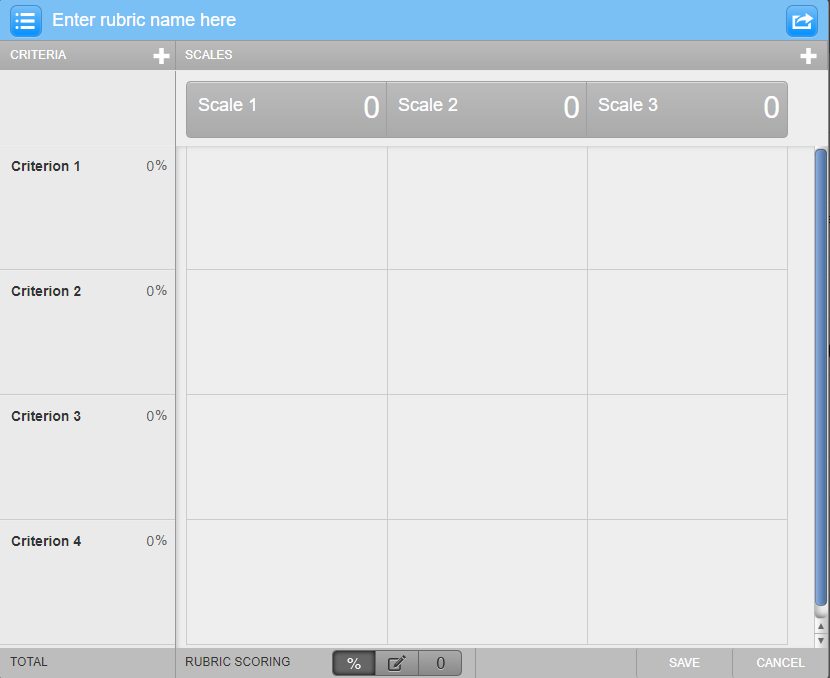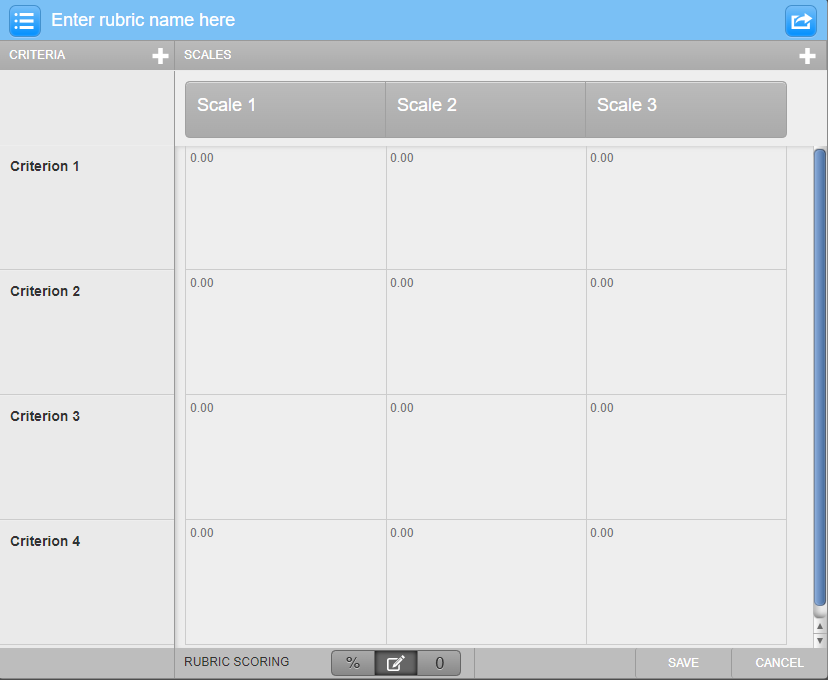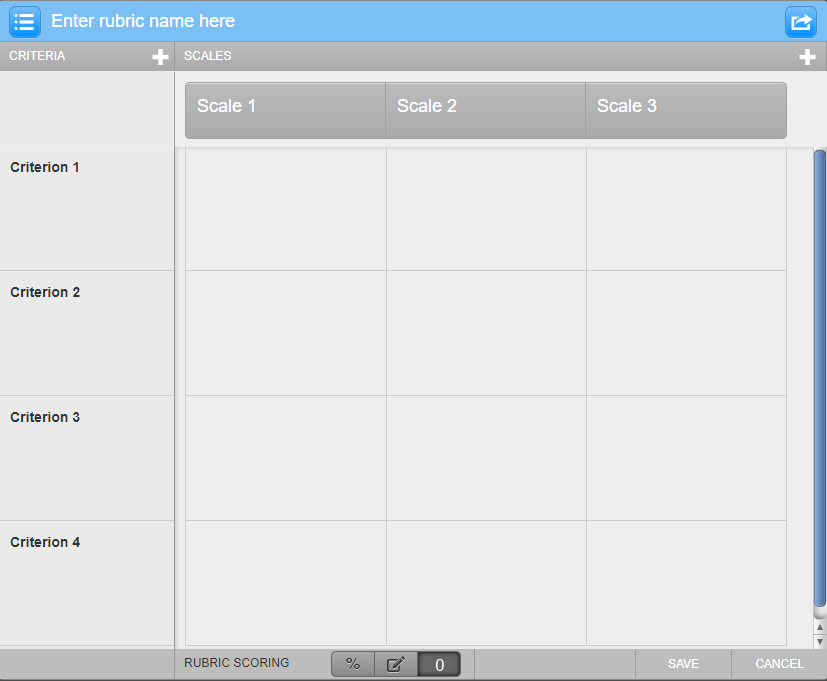Rubrics in Turnitin
Rubrics are tools used in the process of assessing student work and include three essential features, as defined by Popham (1997 cited in Dawson 2017 p. 349):
- Evaluative criteria;
- Quality dimensions for those criteria at particular levels; and
- A scoring strategy.
Turnitin Feedback Studio provides the functionality to create, import, and export rubrics that are attached to student submissions within a Turnitin activity in your subject Moodle site.
Turnitin Feedback Studio rubric types
Standard rubric

The standard rubric (also known as a percentage rubric) can be used for numerical scoring. This type of rubric allows you to enter scale values and criteria percentages. Turnitin will convert the rubric score to a mark out of 100, or whatever the amount entered in the ‘maximum marks’ section is. For example, you may have four criteria (rows) related to the assessment, worth 10, 20, 20 and 15% respectively. Even though this adds up to 65%, Turnitin will convert this mark to a mark out of whatever your set ‘maximum marks’ is.
The maximum value for the Standard rubric will be the same as the highest scale value entered. That is because with this rubric you are pre-assigning a fixed mark to each scale. You might have 6 scales (columns) and you must enter a value for each of them, e.g. 0, 2, 4, 6, 8, 10. If you are dealing with larger marks more along the lines of the tradition F/HD parameters, and marking something like paragraph length answers or reflections, then it is recommended to use 6 scales instead of 5 to achieve a wider spread of marks.
Custom rubric

The custom rubric allows you to enter any value directly into the rubric cells. The maximum value for the Custom rubric will be the sum of the highest value entered in each of the criteria rows. When using this rubric it is recommended to use 6 scales instead of 5 to achieve a wider spread of marks.
Qualitative rubric

The qualitative rubric allows you to create a rubric that has no numeric scoring. This rubric is useful for providing students with clear indications of the assessment criteria, and showing them the range into which their marks fall (e.g. the traditional F, P, C, D, HD numeric parameters).
Why?
Feedback is an essential component of assessment and rubrics are a useful tool for providing feedback to students while communicating your expectations for an assessment task. Using a rubric within the Turnitin Feedback Studio provides students with feedback that is:
- Specific – matching written feedback to assessment criteria, including the ability to match QuickMarks to rubric criteria when marking a student submission.
- Personalised – indicating students’ strengths and areas that could be improved.
- Timely – using rubrics within the Turnitin Feedback Studio streamlines marking workflow.
- Aligned – to student’s needs (in addition to supporting validity, reliability, and alignment to the subject learning outcomes).
How?
The following articles provide information on aspects of setting up and using rubrics in the Turnitin Feedback Studio:
- Creating rubrics using Turnitin
- Importing and exporting rubrics in Turnitin
- Marking using rubrics in Turnitin
Related information
- Turnitin - Rubric scorecards and grading forms | External resource



